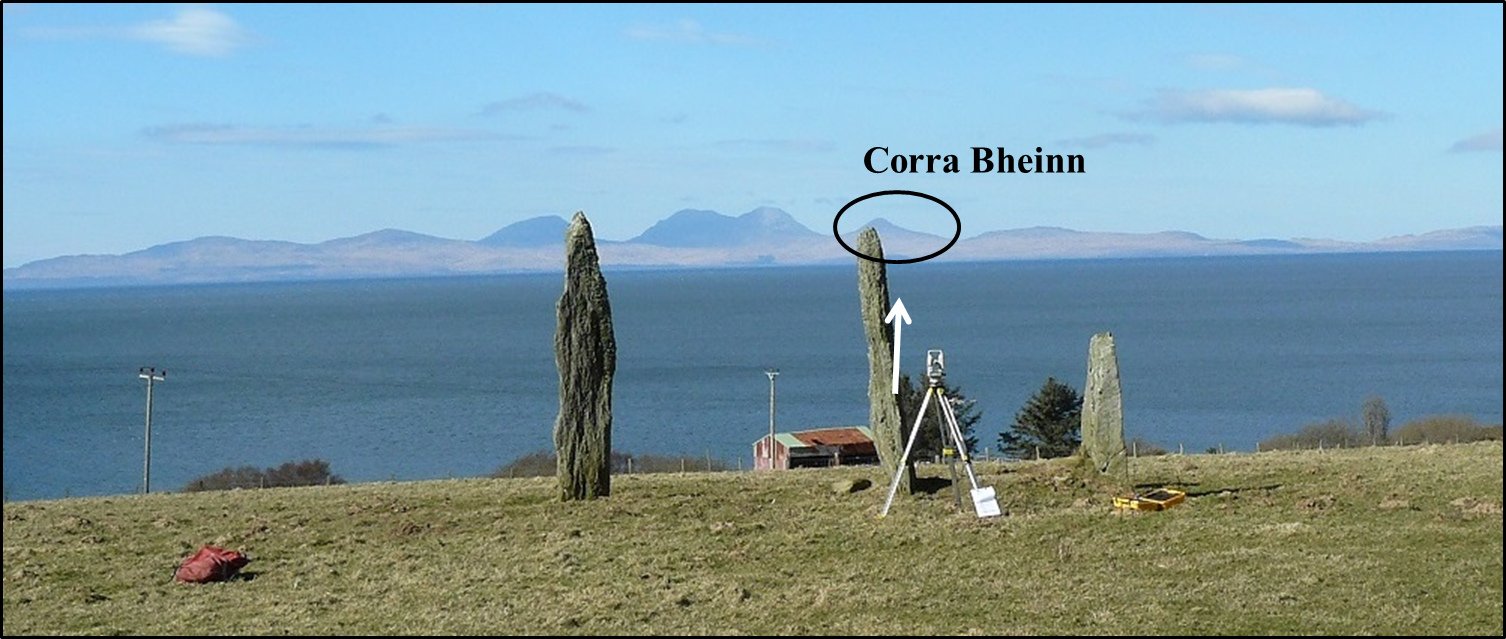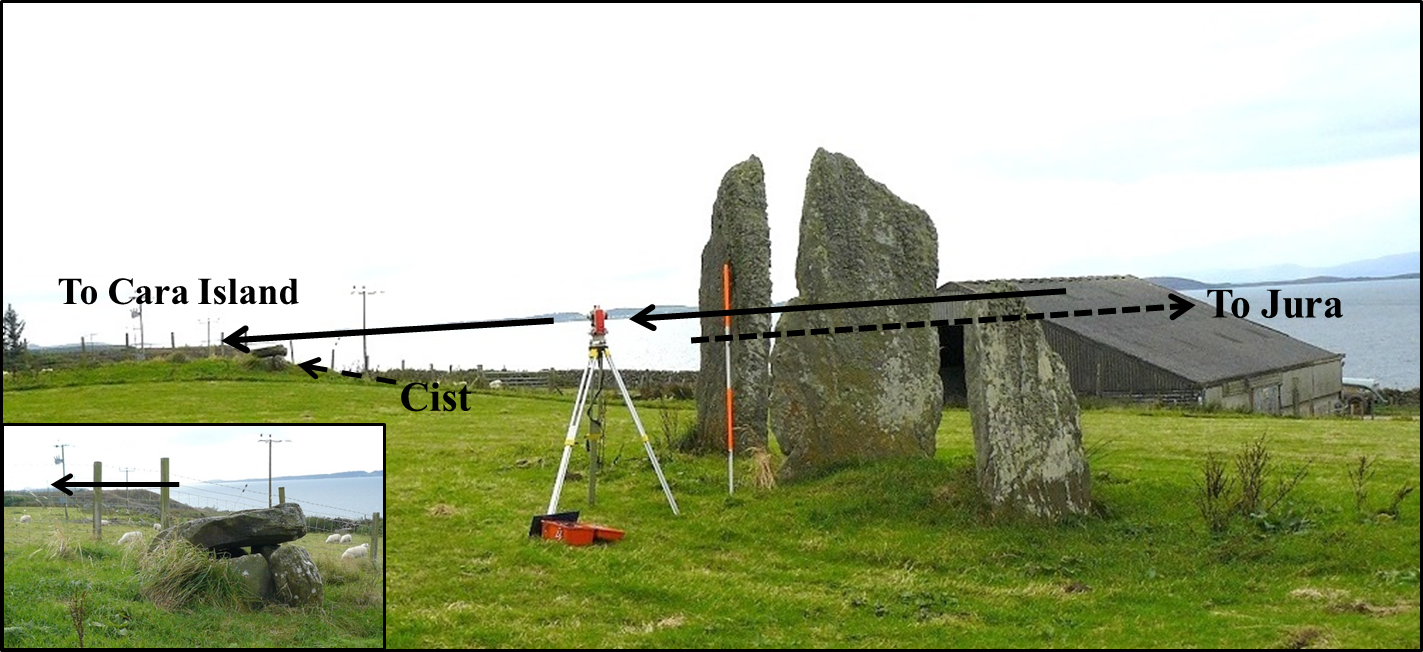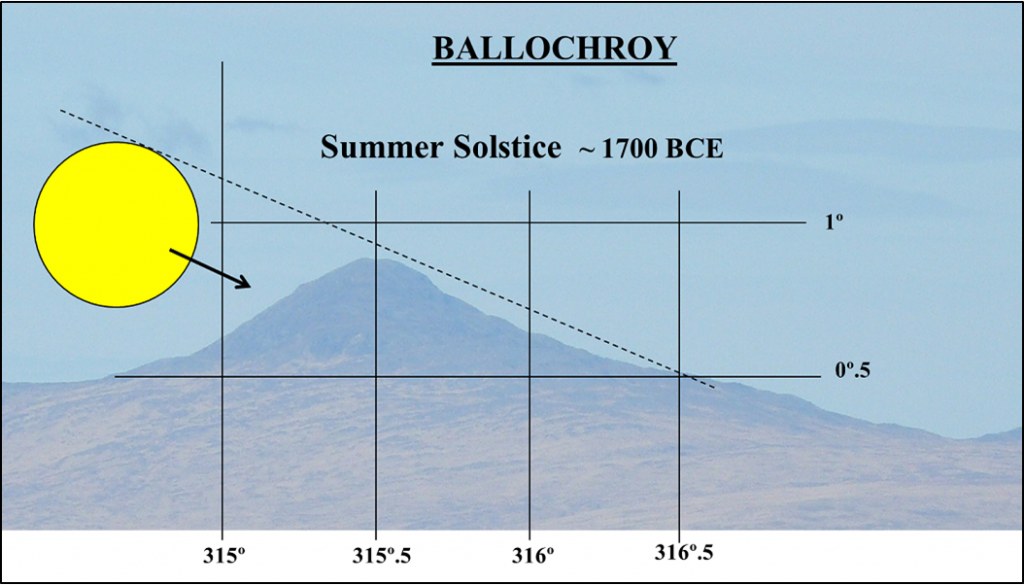Ballochroy (NR 7309 5241)
A row of three large slabs set across the line. The central slab gives a clear indicated direction towards the NW, to Jura. Along the line of the stones to the SW is a cist 35m. away The same line appears to indicate the western end of Cara Island 11km. distant.
Indicated directions
Thom had alignments in both directions, but that to Cara Island is doubtful. A drawing by the antiquarian Edward Lhuyd in 1699 clearly shows three cairns in line with the three stones, the largest of them built over the cist, and would have blocked the view to Cara Island. The drawing shows a fourth stone beyond the three cairns. The burial cist (a box-shaped tomb with four side slabs) is still visible at the site, although the mound and the other features sketched by Lhuyd have been destroyed. The remains of this cairn were excavated in the 1960s, and the archaeological evidence indicates that it is very unlikely to have been constructed as late as the mid-second millennium B.C. Thus the large cairn which was over the cist almost certainly predates the stones and Cara Island would not have been visible from the stones.
Additional points are that the alignment length of 12km. is short for an alignment intended for the day and the altitude would have been about -10ʹ of arc with resultant likely refraction problems. However an alignment for purely ceremonial purposes, perhaps with viewing from the SW side of the large cairn, is entirely possible.

The slope for Corra Bheinn (pron. ‘vane’) is closely parallel to the path of the setting sun, and so is suitable as a foresight.
Four separate sets of measurements were made on different visits. The results were in close agreement, and showed the path of the upper limb of the sun at the solstice (using the value for ε: 23â° 54ʹ.2 ± 0ʹ.7 as derived by Thom) was about 2ʹ of arc clear of the upper part of the slope.
Thom used various refinements for such long alignments which I have not done. E.g. adjustments for graze effects and for temperature effects on refraction.
Note: Ballochroy is discussed in Astronomy in Prehistoric Britain and Ireland by Clive Ruggles, 1999, pp21-25. The site was assessed by a group of which Ruggles was a member. The survey results agreed closely with Thoms’ conclusions regarding the alignment to Corra Bheinn. The paper is referenced in Ruggles 1999 book (note 35, p25) and given in the bibliography.. However Ruggles discounts the significance of the results and of the site. (Bailey et al. ‘Survey of three megalithic sites in Argyllshire’, 1975, Nature 253, 431-3).

